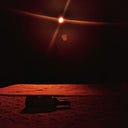Review: Ngan Hiar Sha Wah (I am going down to the river)
In the debate of what comes first, the art or the artist. It is always the former, for me. The presentation makes me think about the creator. Therefore while reviewing any work, I will give primacy to the creation.
Brief Overview
On 31 October 2021, I experienced, ‘I am going down to the river’ as a part of Ranga Shankara Theatre Festival. It is a map of the Wah Umkhrah that flows through Shillong.
The documentation of Wah Umkhrah is shown through five chapters that chronicle the river through discourse, folk tale, memory of locals, interviews with residents, map of the river through the city and visual tour of the river through the lens of the camera.
Content
- Having read, ‘How I became a tree’ by Sumana Roy, I could not help but draw a parallel between these two strong, poetic and ecologically sensitive voices. Although one is in the form of the written word and the other in theatre, it is astonishing how both these voices are simple, direct and extremely universal.
- The project draws attention to the impact of the river on the identity of the Khasis. The accumulation of waste in Wah Umkhrah is a wake-up call for our social reality and disappearing relationship with our rivers which have been the foreground of civilization in India.
- A small section in the documentation points out that one of the earliest human intervention to the river was made by the British when they altered the course of the river to suit their recreational spaces. This intervention causes flash floods in the nearby localities during heavy rainfall. The colonial intervention is also an interesting parallel to how Christianity has made inroads into the culture of Khasi Pnars (almost 50% have accepted Christianity) out of opportune material benefits and educational opportunities in Christian missionaries. These inroads to culture could be attributed to the indifference of British towards natural resources of their colonies or other subcultures.
Form
- It was beautiful to see the visual techniques of this documentation especially the personification of the river Wah Umkhrah through the human body. Body as we understand in performing arts is a space of great political metaphor. When you see change in the body you understand passage of time. When the drops of coloured paint fell on this white Umkhrah, you’d feel how the river chokes on waste. The river can never be the same again.
- In one of his webinar, theatre veteran Bansi Kaul explains, “Theatre is Penta-dimensional: made of length, breadth, height, memory and imagination.” The website seems like a digital theatre piece since memory is at the core of its imagination. Wah Umkhrah is an object of the past. Time woven into the immoral fabric of humanity.
- The sound of the river flowing seems to give a meditative rhythm to each chapter. Mind wanders off into the reality and aesthetics of Shillong.
- The camera was also used very intelligently across the five chapters with picturesque shots and smooth mobility.
About Some Aspects of Khasi Religion
The website derives deep inspiration from the oral traditions of Khasis Pnars. It is important to note that the Khasis do not have any religious text or an institution that runs the religion. All the moral precepts and other prescription of the religion are passed on by word of mouth. Khasis compare life to a dew drop hanging from a leaf. Just as a delicate dew drop glitters and sparkles with all the beautiful colours of the rainbow so also life on Earth. This optimistic voice is important to note especially when one is talking about a grim ecological problem. Therefore, when Khasis voice the plight of Wah Umkhrah, it is critical to understand it’s not a simple outcry to save the river, it is a call for radical effort of saving whatever is left of the river.
As we move ahead in the 21st century, modern social order is less affected by religious institutions but the power of religion on morality could act as a catalyst while delegating individual responsibility to solve this complex problem. One hopes that the Khasis will raise their hands to come together and collectively find sustainable solution for Wah Umkhrah.
Artists
Here are more details about the artists who have made this:
Concept, Script and Performance: Lapdiang A. Syiem and Esther Syiem
Design and Technical Team: Juban Lamar and Abigail Nongsiej
Music Composition: Apkyrmenskhem Tangsong and Juban Lamar
Next time it is up for showcase, make sure you witness it live.
